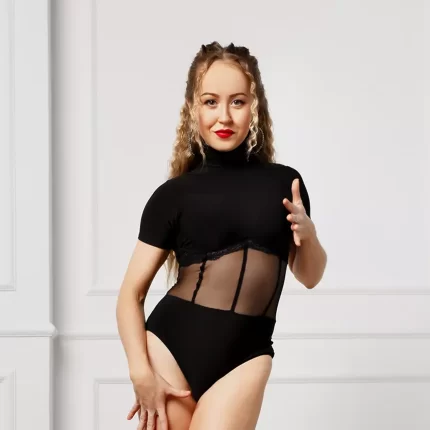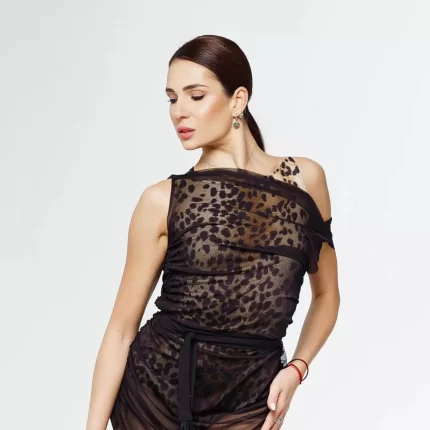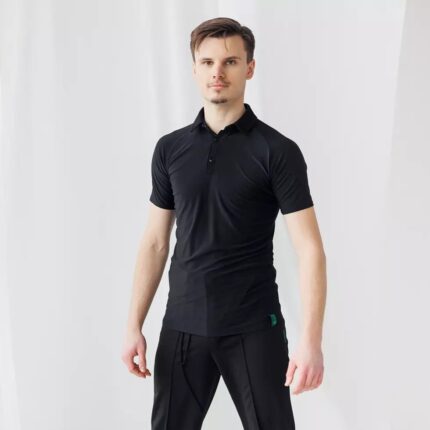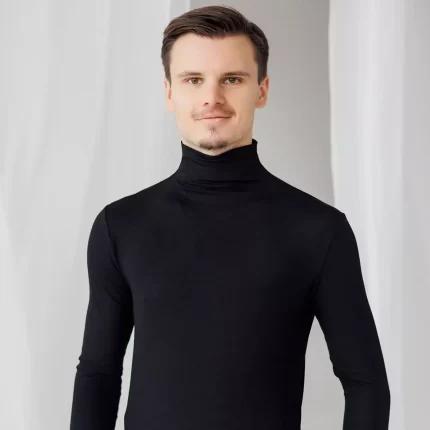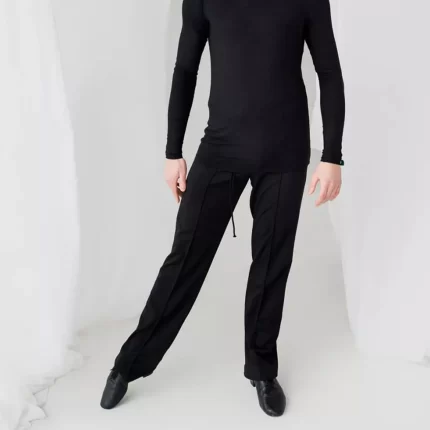Introduction
Dance is a joyful and expressive activity for kids of all ages, fostering creativity, discipline, and physical fitness. As children embark on their dance journey, providing them with the right kids dancewear is essential for their comfort, confidence, and performance. This guide explores the world of children’s dancewear, offering tips and insights on finding the perfect fit and style for your young dancer. From ballet to hip-hop, we’ll cover the essentials of dancewear for kids, helping you choose comfortable, durable, and stylish outfits that will support your child’s passion for dance.
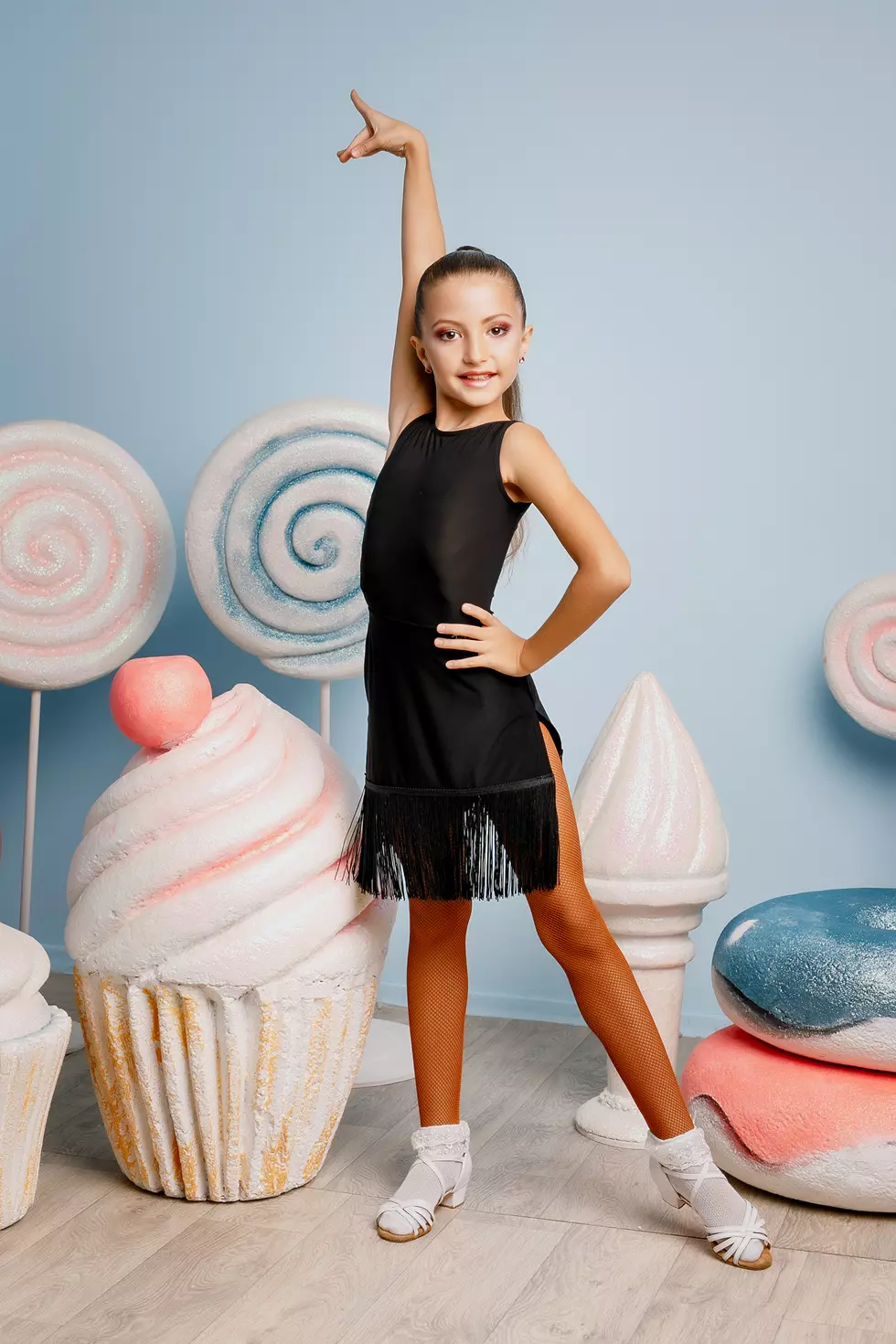
Section 1: Prioritizing Comfort and Fit
When it comes to kids dancewear, comfort and fit are paramount. Unlike everyday clothing, dancewear needs to allow for a full range of motion while providing support and staying securely in place. This section explores the key factors to consider when choosing comfortable and well-fitting dancewear for kids, including the importance of proper fit, selecting breathable fabrics, and ensuring durability to withstand the demands of active young dancers. Let’s dive into the essentials of prioritizing comfort and fit to set your child up for a positive and enjoyable dance experience.
1.1 The Importance of Proper Fit
A proper fit is crucial for kids’ dancewear, impacting not only comfort but also safety and performance. Dancewear that is too tight can restrict movement, cause chafing, and hinder a child’s ability to execute steps correctly. Conversely, dancewear that is too loose can be distracting, cause tripping hazards, and may not provide adequate support.
Here’s why proper fit is essential:
- Freedom of movement: Dance requires a wide range of motion, and well-fitting dancewear allows children to move freely and comfortably without any restrictions.
- Comfort: Dancewear should feel like a second skin, allowing kids to focus on their technique and performance without being distracted by uncomfortable clothing.
- Injury prevention: Properly fitting dancewear, especially shoes, can help prevent injuries like blisters, sprains, and strains.
- Confidence: When children feel comfortable and supported in their dancewear, it can boost their confidence and self-esteem.
Avoiding restrictions is key to a positive dance experience. When choosing kids’ dancewear, it’s often recommended to size up slightly to allow for growth, but be mindful not to go too large, as this can compromise the garment’s functionality. Look for adjustable features like straps or waistbands that can help customize the fit as your child grows.
1.2 Choosing the Right Fabrics
Selecting the right fabrics is essential when choosing kids’ dancewear. Since children’s skin can be more sensitive than adults’, prioritizing breathable fabrics and soft fabrics is key to ensuring comfort and preventing irritation during dance practice.
Here’s a look at ideal fabric properties for kids’ dancewear:
- Breathability: Allows for air circulation, preventing overheating and keeping kids cool during activity.
- Cotton: A natural fiber that is soft, breathable, and absorbent. However, it can retain moisture, so it’s often blended with other fibers for dancewear.
- Mesh: Provides excellent ventilation and is often used in panels or as an overlay for added breathability.
- Moisture-wicking: Pulls sweat away from the skin, keeping kids dry and comfortable.
- Lycra (Spandex): A synthetic fiber known for its stretch and moisture-wicking properties. It’s often blended with other fabrics to provide elasticity and shape retention.
- Polyester blends: Many performance fabrics utilize polyester for its moisture-wicking capabilities and durability.
- Softness: Ensures that the dancewear feels comfortable against the skin, preventing chafing or irritation.
- Cotton: Known for its softness and comfort.
- Microfiber fabrics: Often used for their soft texture and moisture-wicking properties.
When choosing fabrics for kids’ sensitive skin, it’s also important to consider any potential allergies or sensitivities. Look for hypoallergenic fabrics and avoid any materials that have been treated with harsh chemicals. At Fashion Dance, we understand the importance of using gentle, high-quality fabrics in our children’s dancewear, ensuring that young dancers feel comfortable and confident during every practice.
1.3 Durability and Longevity
Kids are active, and their dancewear needs to be able to keep up! Durable dancewear is essential for withstanding the wear and tear of regular practice, performances, and repeated washing. Choosing long-lasting materials and well-constructed garments will ensure that your child’s dancewear can withstand their active lifestyle and provide good value for your money.
Here are some factors to consider when it comes to durability:
- Fabric choice: Some fabrics are naturally more durable than others.
- Nylon and polyester: Known for their strength and resistance to abrasion.
- Lycra (Spandex): Adds stretch and resilience to fabrics, helping them retain their shape.
- Cotton blends: Can offer a good balance of durability and comfort, especially when blended with synthetic fibers.
- Construction:
- Reinforced seams: Look for dancewear with reinforced seams, especially in high-stress areas like the crotch, underarms, and waistband. Double-stitched or flatlock seams are good indicators of quality construction.
- Quality stitching: Ensure that the stitching is even and secure, without any loose threads or skipped stitches.
- Care instructions: Properly caring for your child’s dancewear can significantly extend its lifespan. Pay attention to the care label and follow the recommended washing and drying instructions.
Investing in durable dancewear is a smart choice for both your budget and your child’s comfort. By choosing well-made garments from reputable brands like Fashion Dance, you can ensure that your child’s dancewear will last through many practices and performances, allowing them to focus on their passion for dance.
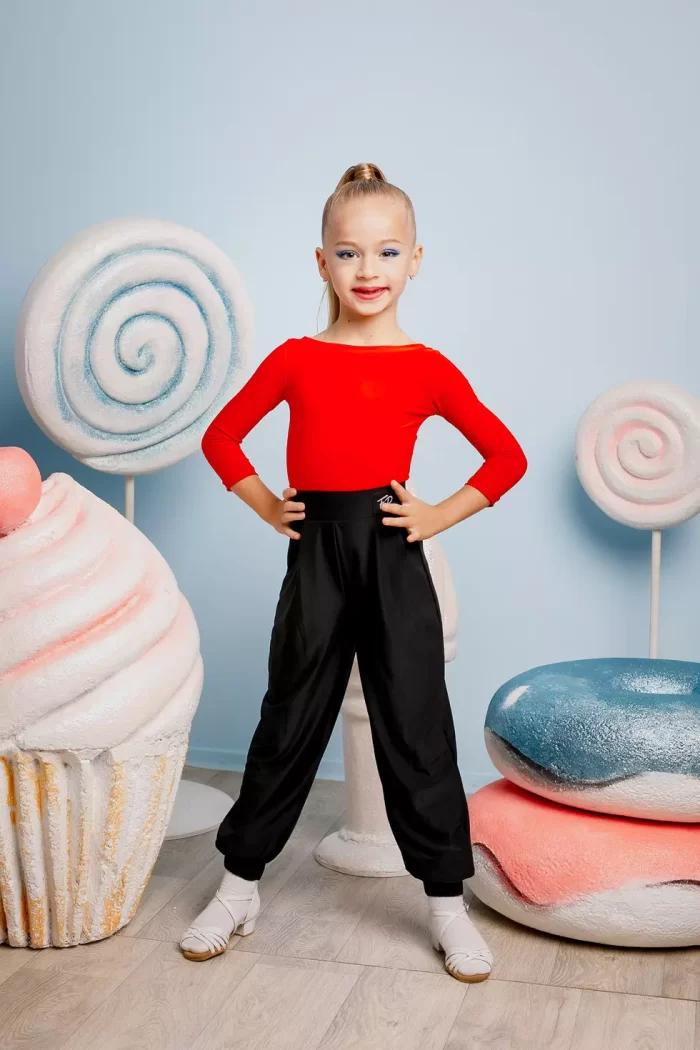
Section 2: Dancewear Styles for Different Disciplines
Just as different dance forms have unique movements and aesthetics, they also call for specific styles of dancewear. This section explores the typical kids dancewear choices for various disciplines, including ballet, tap, jazz, hip-hop, and contemporary. We’ll provide an overview of the essential garments and footwear for each style, helping you choose the right outfits to support your child’s dance training and allow them to express themselves fully through movement. Let’s discover the perfect dancewear styles for your young dancer’s chosen discipline!
2.1 Ballet Dancewear
Ballet, with its emphasis on grace, precision, and elegance, has a well-established tradition of specific attire. Ballet dancewear for kids typically includes a combination of the following:
- Leotards:
- The foundation of ballet attire, providing a snug fit that allows for a clear view of body lines.
- Come in various styles, such as camisole, tank, short-sleeved, or long-sleeved.
- Proper fit for leotards is crucial; it should be snug but not restrictive, allowing for a full range of movement.
- Tights:
- Usually pink or flesh-toned, creating a seamless line from the torso to the toes.
- Provide warmth, support, and a smooth appearance under skirts or tutus.
- Ballet skirts:
- Often made of sheer fabrics like chiffon or mesh.
- Add a touch of elegance and flow to movements.
- Wrap skirts or pull-on styles are popular choices.
- Ballet shoes:
- Soft, flexible shoes made of leather, canvas, or satin.
- Proper footwear is crucial; shoes should fit snugly and allow the dancer to articulate their feet fully.
- Full-sole shoes are often recommended for beginners, while split-sole shoes offer more flexibility for advanced dancers.
- Warm-up wear:
- Leg warmers, sweaters, and fitted dance jackets help keep muscles warm before, during, and after class.
Fashion Dance offers a wide selection of high-quality ballet dancewear for kids, designed to meet the specific needs of young dancers. When choosing ballet attire, prioritize fit, comfort, and quality to ensure your child can move freely and confidently in class.
2.2 Tap Dancewear
Tap dance, with its rhythmic footwork and percussive sounds, requires tap dancewear that allows for freedom of movement while showcasing the dancer’s fancy footwork. Comfort and practicality are key, but style also plays a role in this energetic dance form.
Here’s what to look for in tap dancewear for kids:
- Tap shoes:
- The most crucial element of tap attire, featuring metal taps attached to the heels and toes.
- Proper footwear is paramount; shoes should fit snugly but not be too tight, allowing for proper articulation of the foot.
- Different types of taps and shoe styles are available, so consulting with a dance teacher is recommended.
- Leotards:
- A common base layer, providing a comfortable and streamlined fit.
- Can be paired with various bottoms, such as dance pants, shorts, or skirts.
- Dance pants:
- Jazz pants, leggings, or other fitted, flexible pants are popular choices.
- Should allow for a full range of motion in the legs and hips.
- Comfortable and stylish outfits:
- Tap dancers often choose outfits that are both comfortable and visually appealing.
- This can include fitted tops, t-shirts, or even stylish dance dresses that allow for movement.
When selecting tap dancewear, prioritize comfort and the ability to move freely. Ensure that the clothing allows the instructor to see the dancer’s movements clearly. And, of course, make sure your child loves their tap shoes, as they are the heart and soul of this exciting dance style!
2.4 Hip-Hop Dancewear
Hip-hop dance, with its dynamic, rhythmic, and often improvisational style, calls for hip-hop dancewear that is comfortable, allows for a wide range of motion, and reflects the urban and expressive nature of the dance form. Unlike more traditional dance styles, hip-hop often embraces a more relaxed and stylish aesthetic.
Here are some key elements of hip-hop dancewear for kids:
- Comfortable and loose-fitting clothing:
- Oversized t-shirts, hoodies, and tank tops are popular choices, providing both comfort and a relaxed look.
- Baggy pants, such as cargo pants or sweatpants, allow for unrestricted movement.
- Sneakers:
- Essential for providing support and cushioning during dynamic movements.
- Stylish streetwear sneakers are often incorporated into hip-hop outfits, reflecting the dance style’s urban roots.
- Choose sneakers with good ankle support and a non-marking sole.
- Stylish streetwear:
- Hip-hop dancewear often incorporates elements of contemporary fashion, allowing kids to express their personal style.
- This can include graphic tees, stylish joggers, and trendy accessories.
- Hip-hop fashion:
- Reflects the culture and attitude of hip-hop, often incorporating bold colors, patterns, and logos.
- Allows for individuality and self-expression through clothing.
When choosing hip-hop dancewear, prioritize comfort and freedom of movement. The clothing should allow kids to execute a wide range of motions without feeling restricted. It’s also a great opportunity to let kids express their personalities through their clothing choices.
2.5 Contemporary Dancewear
Contemporary dance, with its fluid movements, expressive choreography, and emphasis on emotional connection, requires contemporary dancewear that is comfortable, allows for a wide range of motion, and enhances the dancer’s lines and form. The attire often blends elements of ballet and modern dance, creating a look that is both elegant and functional.
Here are some typical elements of contemporary dancewear for kids:
- Leotards:
- A common base layer, providing a streamlined and supportive fit.
- Can be paired with various bottoms or worn alone.
- Footless tights:
- Offer a smooth line from the torso to the feet while leaving the feet bare for connection with the floor.
- Provide warmth and support without restricting movement.
- Flowing skirts or pants:
- Often made from lightweight, breathable fabrics like mesh, chiffon, or jersey.
- Enhance the fluidity and expressiveness of movements.
- Comfortable and expressive outfits are created by combining these with leotards or fitted tops.
- Convertible or stirrup tights
- An alternative to footless tights, these offer versatility and a slightly different look.
- Unitards
- Offer a streamlined, all-in-one solution that’s great for contemporary’s often athletic requirements.
When choosing contemporary dancewear, prioritize comfort and freedom of movement. The clothing should allow for a full range of motion, including floor work, leaps, and turns. The attire should also enhance the dancer’s lines and form, contributing to the overall aesthetic of contemporary dance.
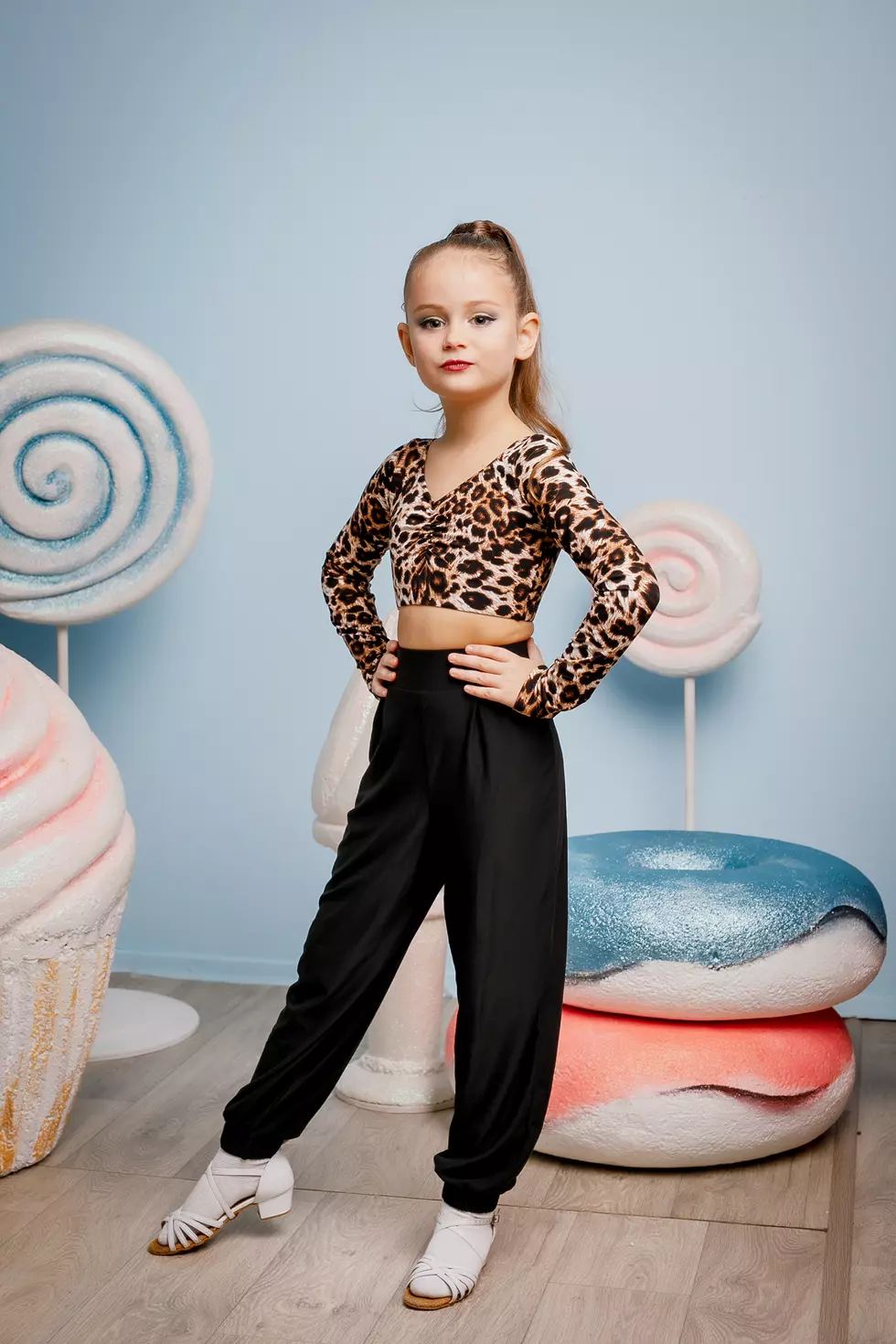
Section 3: Essential Dancewear Accessories
Beyond the core garments, the right accessories play a crucial role in a dancer’s comfort, safety, and performance. This section explores the essential dancewear accessories that every young dancer should have in their kit, from dance shoes and tights and socks to hair accessories and dance bags. These items not only complete the dance outfit but also provide vital support and functionality. Let’s discover the must-have accessories that will help your child make the most of their dance practice!
3.1 Dance Shoes
Dance shoes are arguably the most important accessory for any dancer, providing the necessary support, flexibility, and grip for each specific dance style. Unlike regular shoes, proper footwear designed for dance allows for proper articulation of the foot, enhances performance, and helps prevent injuries.
Here’s a breakdown of essential dance shoes for different disciplines:
- Ballet shoes:
- Soft, flexible shoes made of leather, canvas, or satin.
- Full-sole shoes are often recommended for beginners, while split-sole shoes offer more flexibility for advanced dancers.
- Fit should be snug, like a sock, with no extra room at the toes.
- Tap shoes:
- Feature metal taps on the heels and toes that create rhythmic sounds.
- Come in various styles, from Mary Janes to oxfords.
- Fit should be snug but comfortable, allowing for clear articulation of the foot.
- Jazz shoes:
- Typically slip-on or lace-up, often with a split sole for maximum flexibility.
- Made from leather or synthetic materials.
- Fit should be snug, allowing the dancer to point and flex their feet easily.
- Hip-hop sneakers:
- Offer more support and cushioning than other dance shoes.
- Often resemble stylish streetwear sneakers but with features designed for dance, such as non-marking soles and pivot points.
- Should provide good ankle support and allow for a full range of motion.
Choosing the right dance shoes is crucial for your child’s safety and performance. It’s always recommended to consult with a dance teacher or a knowledgeable dancewear retailer, like Fashion Dance, to ensure your child has the proper footwear for their specific dance style and needs.
3.2 Tights and Socks
Tights and socks are essential dancewear accessories that provide comfort, support, and a polished look. They play a crucial role in various dance styles, serving both functional and aesthetic purposes.
Here’s a closer look at different types of tights and socks for dance:
- Dance tights:
- Typically made from nylon and spandex blends for stretch and durability.
- Offer a smooth, streamlined look under leotards and skirts.
- Come in various styles:
- Footed tights: Cover the entire foot.
- Footless tights: End at the ankle, often worn in contemporary or modern dance.
- Convertible tights: Feature a small hole in the sole, allowing the dancer to wear them as footed or footless.
- Stirrup tights: Have a strap that goes under the arch of the foot, leaving the heel and toes exposed.
- Ballet socks:
- Shorter than tights, typically ending at the ankle.
- Often worn with ballet shoes for added comfort and to protect the skin.
- Made from soft, breathable materials like cotton or nylon blends.
- Moisture-wicking socks:
- Ideal for styles like jazz, tap, and hip-hop.
- Help keep feet dry and comfortable during intense practice sessions.
- Often made from synthetic materials designed to wick away sweat.
When choosing tights and socks, consider:
- Comfort and support: Tights should fit snugly but not be too restrictive. Socks should provide cushioning and support without being too bulky.
- Dance style: Different dance styles may have specific requirements or traditions regarding tights and socks.
- Color: Ballet often uses pink or flesh-toned tights, while other styles may allow for more color options.
The right tights and socks can enhance a dancer’s comfort, performance, and overall appearance. They are an essential part of every dancer’s wardrobe, providing both functional and aesthetic benefits.
3.3 Hair Accessories
For dancers, hair accessories are more than just a fashion statement; they’re a crucial part of ensuring that hair stays neat, secure, and out of the face during practice and performances. The right hair accessories can help dancers maintain focus and execute their movements without distraction.
Here are some essential hair accessories for young dancers:
- Hair ties:
- Used to create ponytails, braids, and other updos.
- Choose strong, snag-free elastics that won’t damage hair.
- Keeping hair out of the face is essential for maintaining clear vision and preventing distractions.
- Hairnets:
- Often used in ballet to create a neat and tidy bun.
- Help contain stray hairs and maintain the bun’s shape.
- Bun covers:
- Decorative covers that can be placed over a bun for added style and security.
- Come in various colors, fabrics, and designs.
- Hairpins and bobby pins:
- Used to secure buns, updos, and stray hairs.
- Choose pins that match your child’s hair color for a seamless look.
- Headbands:
- Can help keep shorter hair and flyaways away from the face.
- Choose comfortable, non-slip headbands that won’t cause headaches.
When selecting hair accessories, consider:
- Functionality: The primary purpose is to keep hair secure and out of the face.
- Comfort: Accessories should not cause pain or discomfort during wear.
- Style: Choose accessories that complement your child’s dancewear and personal style.
Properly securing the hair is not just about aesthetics; it’s about safety and allowing the dancer to focus on their technique and performance without distraction.
3.4 Dance Bags
A well-organized dance bag is an essential accessory for any dancer, providing a convenient and practical way to carry shoes, dancewear, and other essentials to and from class, rehearsals, and performances. Dance bags help keep everything organized and easily accessible, ensuring that young dancers are always prepared.
Here are some popular types of dance bags:
- Duffel bags:
- A classic choice, offering ample space for shoes, clothes, and accessories.
- Often feature multiple compartments for organization.
- Come in various sizes and styles to suit different needs.
- Backpacks:
- A comfortable option for carrying dance gear, especially for younger dancers.
- Look for backpacks with padded straps and multiple compartments.
- Tote bags:
- A stylish and versatile option, suitable for carrying smaller items.
- Can be used in conjunction with a larger bag for extra storage.
- Garment bags:
- Used for transporting and storing costumes, protecting them from wrinkles and damage.
When choosing a dance bag, consider:
- Size: The bag should be large enough to hold all essential items without being too bulky.
- Compartments: Multiple compartments help keep items organized and easily accessible.
- Durability: Choose a bag made from sturdy materials that can withstand regular use.
- Style: Select a design that your child likes and that reflects their personality.
Having a dedicated dance bag for carrying dancewear essentials helps young dancers stay organized, prepared, and ready for anything. It’s an investment that can simplify their dance life and contribute to a more positive and enjoyable experience. At Fashion Dance, we offer a selection of stylish and practical dance bags.
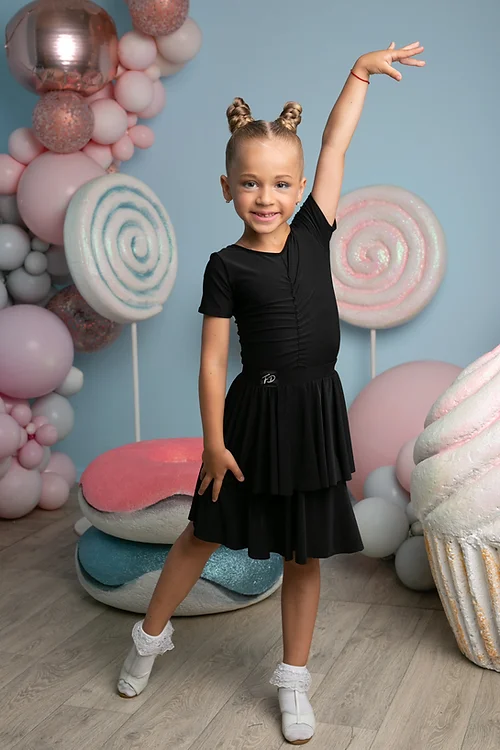
Section 4: Finding and Caring for Kids Dancewear
Now that you have a good understanding of the different types of kids dancewear and accessories, it’s time to discuss where to find these essential items and how to care for them properly. This section provides practical tips on where to shop for kids dancewear, navigating sizing and fit guides, and maintaining the quality and longevity of your child’s dance wardrobe through proper washing and care. Let’s ensure your young dancer is well-equipped with durable and well-maintained dancewear!
4.1 Where to Shop
Finding the right kids dancewear involves knowing where to look for quality, selection, and value. You can explore various options, each with its own advantages:
1. Online dancewear retailers:
- Pros:
- Wide selection: Online retailers often offer a vast selection of brands, styles, and sizes, including options from Fashion Dance.
- Convenience: Shop from the comfort of your home at any time.
- Competitive prices: Online retailers may offer discounts and sales that are not available in-store.
- Reviews: Many online stores feature customer reviews that can help you make informed decisions.
- Cons:
- Sizing challenges: It can be difficult to determine the right fit without trying on the garment.
- Shipping costs: Factor in shipping costs when comparing prices.
- Wait times: You’ll need to wait for your order to be shipped and delivered.
2. Local dancewear stores:
- Pros:
- Expert advice: Store staff can offer personalized fitting advice and help you choose the right dancewear for your child’s needs.
- Try before you buy: Your child can try on different garments and shoes to ensure a proper fit.
- Immediate purchase: You can take your purchases home immediately.
- Cons:
- Limited selection: Local stores may have a smaller selection than online retailers.
- Higher prices: Prices may be higher than online due to overhead costs.
- Travel time: You will have to factor in travel time.
3. Big-box retailers and department stores:
- Pros:
- Convenience
- Potentially lower prices
- Cons:
- Limited selection of dance-specific items.
- Quality may be lower than specialized dancewear retailers.
- Lack of expert advice
When deciding where to shop, consider your priorities:
- Selection: If you need a wide variety of options, online retailers might be best.
- Expert advice: If you need personalized fitting assistance, a local store is a good choice.
- Budget: Compare prices from different retailers to find the best deals.
Ultimately, finding the best selection and prices may involve a combination of online and in-person shopping. Don’t be afraid to explore different options to find the perfect kids dancewear for your child.
4.2 Sizing and Fit Guides
Ensuring the right fit for your child’s dancewear is crucial for their comfort, performance, and safety. Since sizing can vary between brands and even styles, relying on size charts and understanding how to measure your child accurately is essential.
Here’s a guide to navigating sizing and fit:
- Consult size charts:
- Most dancewear retailers provide size charts specific to their brands.
- These charts typically list measurements for bust, waist, hips, and girth, along with corresponding sizes.
- Always refer to the size chart for the specific item you’re purchasing, as sizing can vary between different styles of leotards, tights, or shoes.
- Measuring your child:
- Use a soft measuring tape to accurately measure your child.
- Bust: Measure around the fullest part of the chest.
- Waist: Measure around the natural waistline, usually the narrowest part of the torso.
- Hips: Measure around the fullest part of the hips.
- Girth: Measure from the shoulder, down the front of the body, through the crotch, and up the back to the same shoulder. This is an important measurement for leotards.
- Inseam: Measure from the crotch to the ankle bone. This is helpful for pants and tights.
- Consider growth:
- Kids grow quickly, so it’s often a good idea to size up slightly, especially for items like leotards and tights.
- However, avoid buying dancewear that is too large, as this can be unsafe and hinder movement.
- Look for adjustable features like straps on leotards or drawstrings on pants.
- Read reviews:
- If shopping online, check customer reviews for feedback on sizing and fit.
- When in doubt, contact the retailer:
- Reputable retailers like Fashion Dance will have customer service representatives who can answer your sizing questions and offer recommendations
By carefully consulting size charts, measuring your child, and considering their individual needs, you can ensure that their kids dancewear fits perfectly, allowing them to dance comfortably and confidently.
4.3 Washing and Care Instructions
Properly caring for your child’s dancewear is essential for maintaining its quality, longevity, and appearance. Different fabrics and embellishments require specific care, so always check the garment’s care label for instructions.
Here are some general tips for caring for dancewear:
- Washing:
- Hand washing: Often the gentlest method, especially for delicate items like leotards with rhinestones or mesh details. Use cold water and a mild detergent.
- Machine washing: If the care label allows it, use a delicate cycle with cold water. Place delicate items in a mesh laundry bag for protection.
- Separate colors: Wash dark colors separately from light colors to prevent color bleeding, especially when new.
- Avoid bleach and fabric softener: These can damage the fabric’s fibers and elasticity.
- Drying:
- Air drying: The best method for most dancewear, as it prevents shrinkage, fading, and damage from heat. Lay items flat or hang them to dry, avoiding direct sunlight.
- Tumble drying: If the care label permits it, use a low-heat setting and remove items promptly to minimize wrinkles.
- Specific fabric care:
- Lycra/Spandex: Avoid wringing or twisting these fabrics, as it can damage their elasticity.
- Chiffon/Mesh: Handle these delicate fabrics with care, as they can easily snag or tear.
- Rhinestones/Sequins: Turn the garment inside out before washing, and hand wash if possible.
- Storage:
- Store dancewear in a cool, dry place away from direct sunlight.
- Avoid storing damp dancewear, as this can lead to mildew growth.
By following these washing instructions and care tips, you can help maintain the quality and longevity of your child’s kids dancewear, ensuring it stays looking and performing its best for many practices and performances to come.
Conclusion
Choosing the right kids dancewear is an important part of supporting your child’s passion for dance. By prioritizing comfort, fit, and style, you can help your young dancer feel confident and capable in every class and performance. Remember to consider the specific needs of your child’s dance discipline, choose durable and breathable fabrics, and care for the dancewear properly to ensure its longevity. By making informed choices about kids dancewear, you’re investing in your child’s comfort, safety, and enjoyment of dance. With the right comfortable and stylish dance outfits, your child will be free to express themselves through movement and embrace the joy of dance!
Why is choosing the right fabrics especially important for kids’ dancewear?
Choosing the right fabrics is crucial due to children’s high activity levels during dance and their sensitive skin. Ideal fabrics should be breathable, soft, and moisture-wicking. For instance, cotton provides comfort and softness but can retain moisture, so it’s often blended with synthetic fibers. Lycra and polyester are excellent for active dancewear due to their moisture-wicking and elastic properties. The right fabric choice helps prevent skin irritation and keeps children comfortable throughout their dance sessions.
How do dance styles influence the choice of dancewear?
Each dance style requires specific clothing to support proper movements and express the character of the dance. For example, ballet outfits often include form-fitting leotards and soft ballet shoes, which help highlight body lines and maintain the elegance of movements. In contrast, hip-hop dancers typically prefer loose clothing like hoodies and baggy pants that promote free and sharp movements. It’s essential to consider the style’s requirements so that dancewear enhances, rather than restricts, the dancer’s performance.
What additional accessories enhance the safety and comfort of young dancers?
Accessories play a crucial role in ensuring a child’s safety and comfort during dance. Properly fitted dance shoes prevent injuries and support foot health, while quality tights or socks provide comfort and protect the skin. Hair should be securely tied back using elastics, pins, and headbands to avoid obstruction and distractions. Having a well-organized dance bag helps keep all essential items neatly stored and accessible, contributing to a smoother dance experience.
How should dancewear be cared for to extend its lifespan?
Proper care for dancewear helps maintain its appearance and functionality. Hand washing or using a gentle machine wash cycle in cold water with mild detergent is recommended. Avoid bleach and fabric softeners, which can damage the fibers. Air drying is preferable to prevent shrinkage and fading. For delicate fabrics, such as chiffon or garments with embellishments, hand washing is ideal. Storing dancewear properly, away from direct sunlight, also helps preserve its quality.
What factors should be considered when choosing a store for purchasing kids’ dancewear?
When choosing a store, it’s essential to consider selection, expert advice, and the option to try items on. Online stores offer a wide variety and shopping convenience but may pose challenges in sizing. Local specialty stores provide fitting assistance and personalized recommendations, though their selection may be limited. It’s also important to read customer reviews and compare prices to find the best value for high-quality dancewear. A combination of online and in-person shopping may be the ideal approach.
